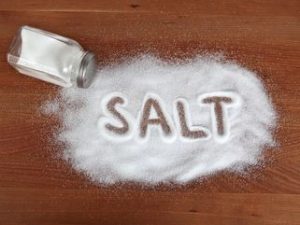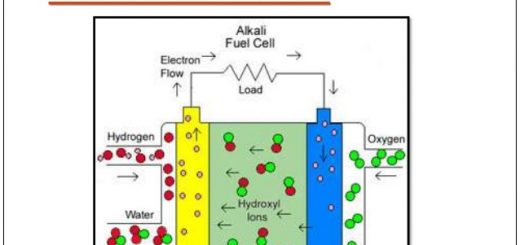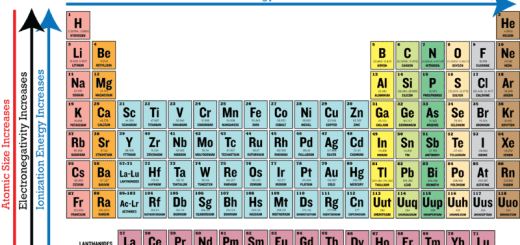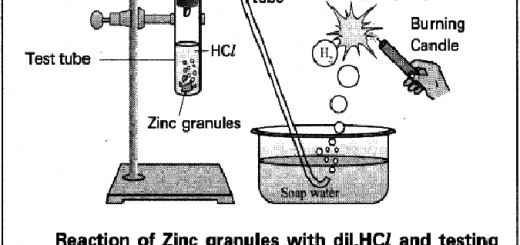Salts formation, The chemical formula of salts and its naming
Salts formation
Salts are abundantly found in Earth’s crust, They are also found dissolved in the seawater, Cation is a positive ion ( M+ ) of the base ( basic radical ) , Anion is a negative ion ( X− ) of the acid ( acidic radical ), They are combined together to form salt M+X− .
Example : Formation of potassium nitrate salt : K+NO3− , K+ is Cation ( basic radical ) , NO3− is Anion ( acidic radical ) , When potassium hydroxide reacts with nitric acid , potassium nitrate salt is produced :
K+NO3− ( aq ) + H+NO3− ( aq ) → K+NO3− ( aq ) + H2 O ( l )
The chemical formula of salts and its naming
Reading of the chemical name of the mineral salt does not differ from the organic salt , as follows : The chemical name of salts formed from two parts , The first part refers to the basic radical ( cation ) , while the second part refers to the acidic radical ( anion ) , such as Sodium chloride & Potassium acetate .
The chemical formula of mineral salt differs from that of organic salt , In the case of mineral salt the basic radical is written firstly, then the acidic radical, In the case of organic salt the acidic radical is written firstly, then the basic radical.
Salts of mineral acid such as K+NO3− , K+ ( potassium is Basic radical ) , NO3− ( nitrate is acidic radical ) , Salts of organic acid such as CH3COO−K+ , K+ ( Potassium is basic radical ) , CH3COO− ( acetate is acidic radical ) .
If the salt contains hydrogen in its acidic radical , we have to add either : ( Bi ) or ( hydrogen) before the name of its acidic radical , such as Na+HSO4− , Sodium bisulphate or Sodium hydrogen sulphate .
In the case of metals that have more than one valence , we have to write a Latin number (I, II, III ) which refers to the valence of the metal , such as Fe2+SO42- Iron ( II ) sulphate, Fe23+(SO4)32- , Iron ( III ) sulphate.
The chemical formula of the salt depends on the acid which represents the source of the anion , the valence of the anion and action .
FeCl3 is the named as iron ( III ) chloride, while AlCl3 is aluminum chloride, although the valence of iron and aluminum is 3 in the two salts , because iron has two valencies ( II, III ), while aluminum has only one valence ( III ).
Some acids have more than one type of salts, due to the number of hydrogen atoms in the acid molecule.
Monobasic acids form only one type of salts like:
Nitric acid HNO3→ forms nitrate salts only such as potassium nitrate KNO3 , Lead ( II ) nitrate Pb(NO3)2 , Iron (III) nitrate Fe(NO3)3 .
Hydrochloric acid HCl → forms chloride salts only such as Sodium chloride NaCl , Magnesium chloride MgCl2 , Aluminum chloride AlCl3 .
Acetic acid CH3COOH → forms acetate salts only such as potassium acetate CH3COOK , Copper ( II) acetate (CH3COO)2Cu , Iron ( III) acetate (CH3COO)3Fe .
Diabasic acids form two types of salts like :
Sulphuric acid H2SO4 → forms sulphate salts ( Sodium sulphate Na2SO4 , Copper (II) sulphate CuSO4 ) and bisulphate salts ( Sodium bisulphate NaHSO4 , Aluminum bisulphate Al(HSO4)3 ) .
Carbonic acid H2CO3 → forms carbonate salts ( Sodium carbonate Na2CO3 , Calcium carbonate CaCO3 ) and bicarbonate salts ( Sodium bicarbonate NaHCO3 , Magnesium bicarbonate Mg(HCO3)2 ) .
Tribasic acids form three types of salts like :
Phosphoric acid ( H3PO4 ) forms three types of salts which are Dihydrogen phosphate group H2PO4− , Hydrogen phosphate group HPO42-& phosphate group PO43- .
Types of compounds, Properties of Acids, Bases (alkalis), Oxides and Salts
Economic importance of some common acids, bases and salts (minerals)




